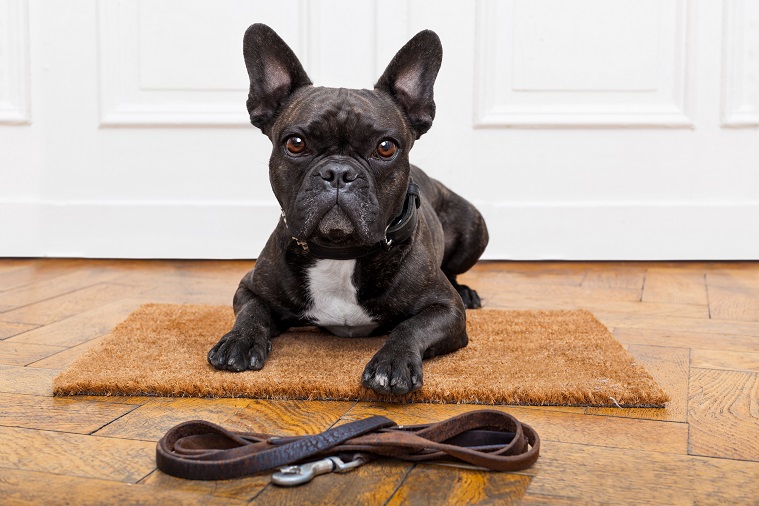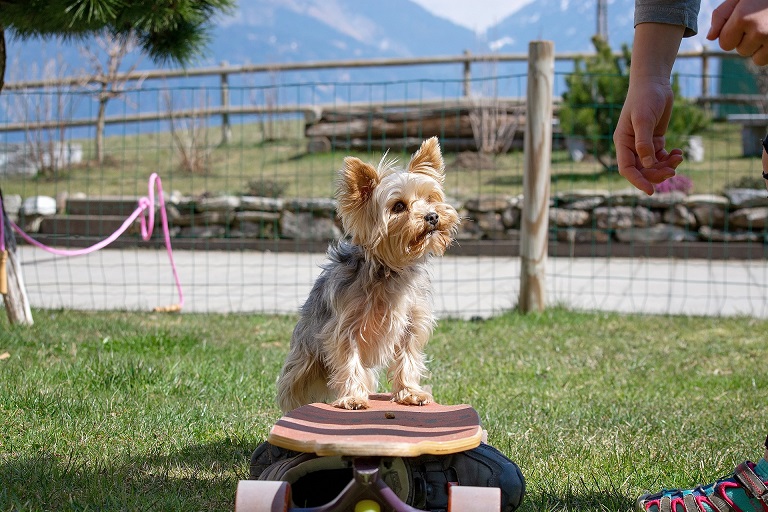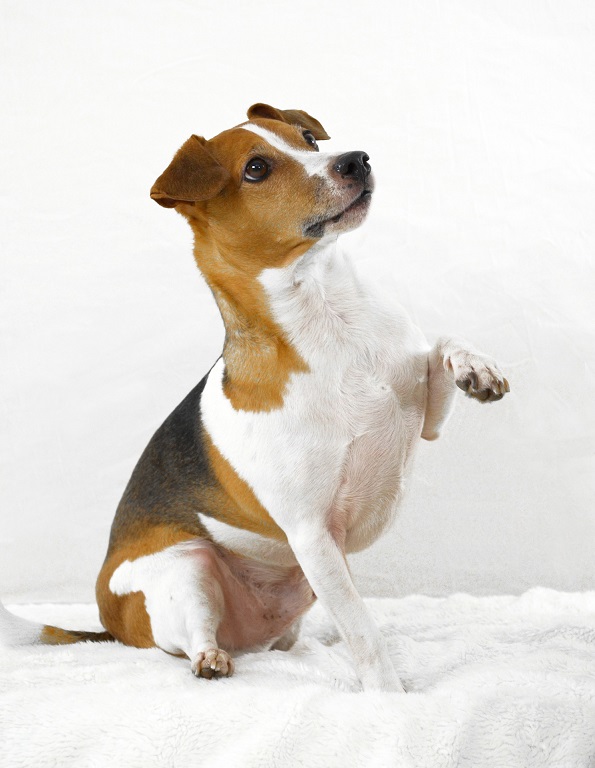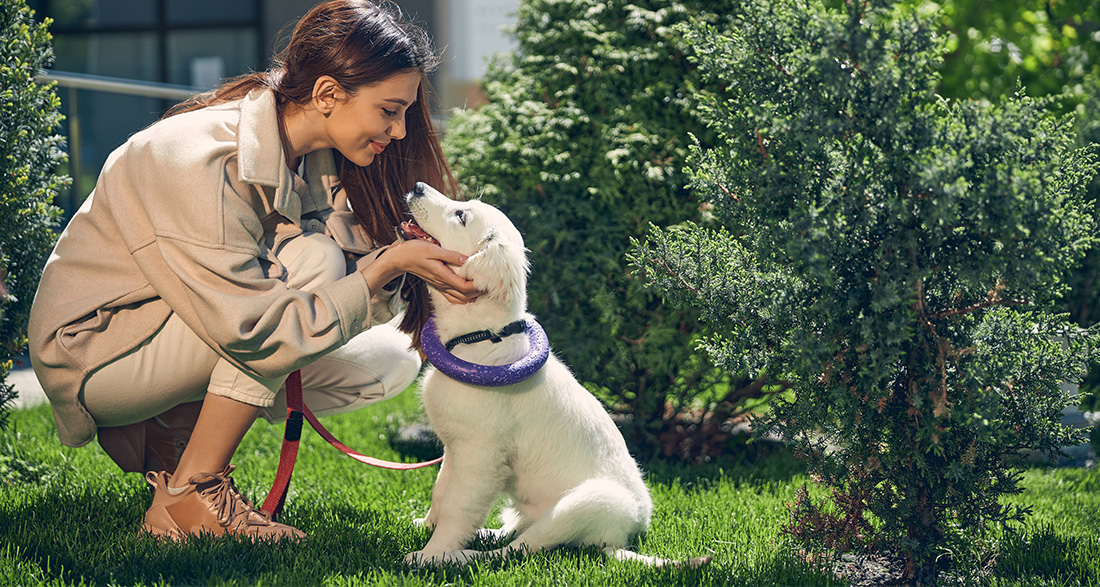You recently brought home a young dog and now want to teach it some fundamental commands? You’re in the right place. These commands are not only crucial to ensuring your puppy is safe and confident, but the entire training process is also a fantastic bonding experience for both you and your furry friend.
To discover which commands are most important for your dog to learn, we’ve compiled some tips from Chief Trainer S. Semel of the Animal Haven shelter in New York City. She provided insights and advice on how to best teach these commands to your dog. Below, you’ll learn how to teach your dog “Sit,” “Down,” and “Stay”—and perhaps we have a few more fun exercises in store for you. For additional tips on your dog, check out our dog guide.
Can a dog be too old to learn a new trick?
According to the dog trainer, the popular saying that you can’t teach an old dog new tricks is entirely false.
“No dog is too young or too old for a few fun command training sessions,” says Semel. “As long as your dog is not restricted by health problems, you can start right away!”
What you should know before teaching your dog commands
“All dogs are different,” Semel said. “There is no fixed way to teach commands that works for every dog.”
So, it’s up to you to figure out what works best for your individual dog—in terms of the motivation you bring, the length of each training session, and how quickly you progress with each new skill.
This means that if you have two dogs, you might find that one learns new commands faster than the other—or even that one becomes restless more quickly. These nuances will only emerge as you progress in training your dog/dogs.
“When you start training a new command, keep it simple for your dog at first,” Semel recommends. “Begin with a simple exercise in a place familiar to your dog and where there are no other distractions.”
Did you know?
It’s crucial for the dog to always receive clear, consistent, and timely feedback in the form of words or treats.
“It’s amazing how much your dog looks to you for cues and guidance. Make sure you communicate the right message to your dog promptly and consistently,” says Semel.
What you need to teach your dog commands
For basic obedience training, you only need a few things: yourself, your dog, treats, and possibly a clicker.
It’s best to get small treats—or even dry food—so you don’t give your puppy too many snacks during intensive training sessions.
If you want to use a clicker—which is essentially a small device that makes a “click!” sound to show your dog it has done what you asked—you can buy one at any pet store or online.
The best time to teach your dog a new command
“In general, it’s better not to train tricks right after feeding your dog when it’s full of energy,” Semel advises. “It’s ideal when your dog is in a somewhat calmer state and ready to focus on the upcoming task—I know, it’s not easy!”
Once you’ve made all the preparations and are ready to start, here are the three basic commands with the recommended steps:
Command: Sit
- Hold the reward (a treat) in your hand and keep your hand at your dog’s eye level.
- Move your hand slowly toward your dog’s forehead and then over its head.
- You want your dog to look at the reward in your hand and follow it without moving its feet. As its head goes back, its bottom should automatically go down.
- Say the word “Yes” (or click) when your dog’s bottom touches the floor, and it sits correctly!
- Once your dog consistently sits with this technique, take the food out of your hand but still use the same motion to get it to sit. Clearly say “Yes” and give it a treat from your other hand.
This way, your dog learns to behave correctly toward you (in this case, “Sit”) without you having to bribe it with food. It also teaches them to wait briefly to receive the reward.

Command: Down
- Kneel in front of your dog.
- Take a treat in your fist and extend your index finger.
- Hold your index finger in front of your dog. You may need to first bring your dog into a “quiet sit”—meaning, don’t verbally say “Sit” but just perform the “Sit” motion. Then, move your hand toward your dog’s chest and slowly down to the ground. Next, move your hand and index finger slowly toward your own body while your dog follows. It should follow and lie down.
- Only give the treat when the dog is fully lying down. Once this happens, mark it with a “Yes” (and a clicker if you have one), open your hand, and allow your dog to eat the treat.
- If he doesn’t want to lie down, change the behavior by using the marking signal (saying “Yes” or clicking) when his elbow bends or he comes partway down. Gradually, get him to move further down each time.
- Once he consistently lies down, use an empty hand but still perform the same motion to get him to lie down. Clearly say “Yes” and give him a treat from your other hand.
- Once he’s down, mark with “Yes,” show him that your hand is empty, praise him, and then give him a treat from your pocket. This way, he learns patience and the willingness to work without food present.
- Gradually change your posture each time you give the command with your hand until you’re in a standing position.
- Introduce the command word (“Down”) by saying it every time you give the signal. This can happen once you are in the standing position, and the dog performs the command 90 percent based on your hand signal.

Command: Stay
- Stay near your dog and have it perform the “Sit” or “Down” command, depending on which command it follows better.
- Show your dog the palm of your hand as a signal (don’t use the verbal command yet).
- Count to two (in your head), then mark with YES or CLICK and give a treat.
- After three successful performances, extend the duration to about four seconds.
- If your dog doesn’t stay for the full four seconds, go back to two or three. Progress slowly to waiting for 15 seconds.
- If your dog gets up before the set time, make a discouraging noise (e.g., “Eh eh”) and turn your back to it for three seconds. Then try again, but shorter, so your dog can succeed.
- Once your dog reliably stays for 20 seconds, start introducing the verbal command (“Stay”) simultaneously with the hand signal.

How to teach your dog to give paw
Now that your dog knows some basic commands, it’s time to teach them one of the easier fun tricks: giving a paw!
- Put your dog in a sitting position.
- Gently tap behind one of your dog’s front kneecaps until it lifts it off the ground. Say “Yes” or click and give it a treat.
- While doing this, quickly place your hand under your dog’s paw when it lifts it off the ground. Say “Yes” or click and give it a treat.
- Repeat this 5-10 times.
- Now, try leaving your hand in the same spot next to the paw without touching it. If it follows the command – JACKPOT (meaning just a bunch of extra treats). If not, repeat step 3 another 5-10 times and try again.
- Once your dog consistently does this with an extended palm, add a verbal signal like “Highfive” or “Give paw” as it performs the trick.
- Begin the process of weaning off treats by only giving them occasionally—such as every other time—until you phase out treats.

Once your dog has mastered the basic commands, you can incorporate and apply more advanced commands and tricks like “Heel,” “Turn around,” or whatever else you can think of. Just remember to be patient, always use positive feedback, and give your puppy plenty of breaks when you notice it getting restless.


